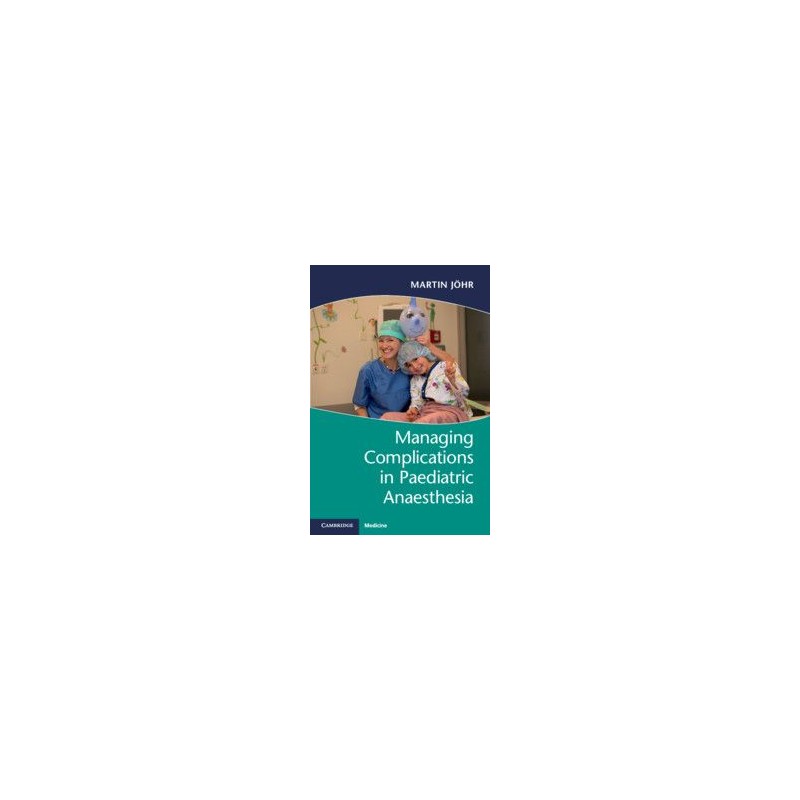Opis
Committed to providing safe anaesthetic care for paediatric patients, it is of paramount importance for clinicians to learn from suboptimal situations in order to continuously improve clinical performance. The first resource of its kind, this text analyses a selection of fascinating case studies and evaluates best practice in providing safe anaesthesia to children with recommendations on how to avoid the most common clinical pitfalls. Featuring over seventy chapters, topics include airway-related problems, vascular access, regional anaesthesia, medication related problems and the management of patients with pre-existing conditions. Each case study is supported by full colour images, making this essential reading for consultants and trainees in anaesthesia.
Szczegóły produktu
Indeks
64545
EAN13
9781316629109
ISBN
9781316629109
Opis
Rok wydania
2018
Numer wydania
1
Oprawa
miękka foliowana
Liczba stron
266
Wymiary (mm)
155.00 x 233.00
Waga (g)
470
Dedication; Acknowledgements; Abbreviations; 1. Introduction; 2. Concepts and strategy; 2.1. General safety rules:: identification of the patient and the type of surgery; 2.2. Adequate anaesthetic plan; 2.3. Understanding the surgical procedure and the patients physiology; 2.4. Organization and fasting times; 2.5. Anticipating massive bleeding; 2.6. Maintaining body temperature; 2.7. Unexpected laboratory results; 3. Airway related problems; 3.1. Breathing system; 3.2. Cannot intubate, cannot ventilate; 3.3. Can intubate, cannot ventilate; 3.4. Laryngospasm; 3.5. Size of the endotracheal tube; 3.6. Insertion depth of the endotracheal tube; 3.7. Laryngeal perforation; 3.8. Bronchial rupture; 3.9. Damage to teeth; 3.10. Damage related to a supraglottic airway; 3.11. Regurgitation during use of supraglottic airway; 3.12. Pneumothorax; 3.13. Pulmonary oedema e vacuo; 3.14. Pulmonary aspiration; 3.15. Bronchial foreign body; 3.16. Pharyngeal foreign body; 3.17. Oesophageal foreign body; 3.18. Un-anticipated tracheal stenosis; 3.19. Unknown pre-existing pathology; 3.20. Upper respiratory tract infection; 4. Vascular access; 4.1. Impossible venous access; 4.2. Paravasation; 4.3. Paravenous injection; 4.4. Intraarterial injection; 4.5. The 3-way stop cock phenomenon; 4.6. Vascular damage; 4.7. Malposition of the catheter tip; 4.8. Anomalies of the venous system; 4.9. Air embolism; 4.10. Venous thrombosis; 4.11. Ischaemic fingers; 5. Regional anaesthesia; 5.1. Wrong site block; 5.2. Inadequate technique; 5.3. Undesirable block extension; 5.4. Local anaesthetic toxicity; 5.5. Methaemoglobinaemia; 5.6. Total spinal anaesthesia; 5.7. Compartment syndrome; 5.8. Ischaemic extremity; 5.9. Needle damage; 5.10. Complications of caudal anaesthesia; 6. Medication related problems; 6.1. Medication error; 6.2. Drug overdose; 6.3. Inadvertent drug administration; 6.4. Drug administration during total intravenous anaesthesia; 6.5. Propofol infusion syndrome; 6.6. Systemic effect of local treatment (e.g. eye drops); 6.7. Hyponatraemia; 6.8. Hyperchloraemic acidosis; 6.9. Hyperkalaemia; 6.10. Prolonged paralysis; 6.11. Unexpected slow recovery; 6.12. Emergence delirium; 7. Pre-existing conditions; 7.1. Malignant hyperthermia; 7.2. Neuromuscular disease; 7.3. Down syndrome; 7.4. Oncologic disease; 7.5. The diabetic child; 7.6. Behavioural disorders; 7.7. Anaphylaxis; 7.8. Sepsis; 7.9. Pregnancy; 8. Miscellaneous; 8.1. Damage caused by pressure; 8.2. Damage related to positioning; 8.3. Iatrogenic burns; 8.4. Toxic skin necrosis; 8.5. Transfusion reaction.


 Dostawa
Dostawa
 Płatność
Płatność
 Zwroty
Zwroty
